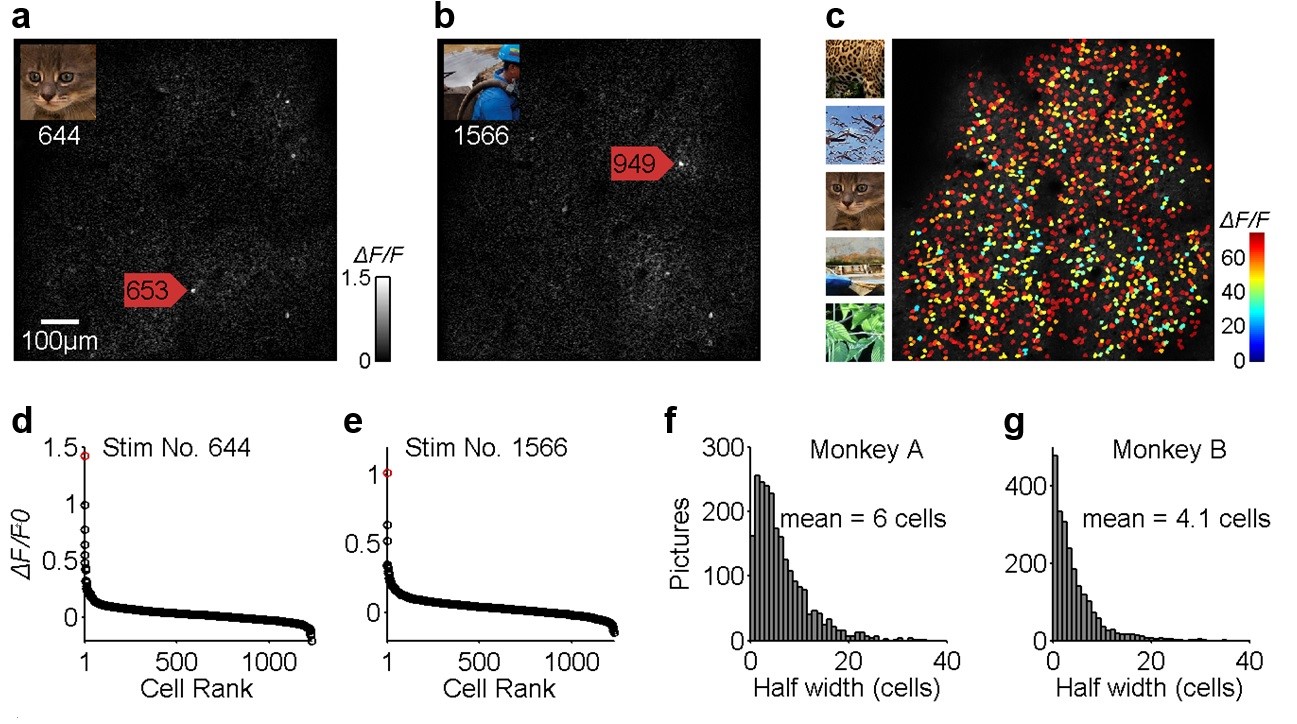Shiming Tang’s group at the PKU-IDG/McGovern Institute for Brain Research, School ofLife Sciencesat Peking University has recently published a paper oneLifetitled “Large-scale two-photon imaging revealed super-sparse population codes in V1 superficial layer of awake monkeys” (Tang et al., 2018).
One general principle of sensory information processing is that the brain must optimize efficiency by reducing the number of neurons processing the same information. The sparseness of the sensory representations in a population of neurons reflects the efficiency of the neural code. Here we employ large-scale two-photon calcium imaging to examine the responses of a large population of neurons with single-cell resolution, within the superficial layers of area V1, while simultaneously presenting a large set of natural visual stimuli, to provide the first direct measure of the population sparseness in awake primates. The results show that only 0.5% of neurons respond strongly to any given natural image—indicating a tenfold increase in the inferred sparseness over previous measurements. These population activities are nevertheless necessary and sufficient to discriminate visual stimuli with high accuracy, suggesting that the neural code in the primary visual cortex is both super-sparse and highly efficient.

Population sparseness of neuronal responses of V1 layer 2 neurons to natural scenes.
This work was supported by the National Natural Science Foundation of China No. 31730109, National Natural Science Foundation of China Outstanding Young Researcher Award 30525016, a project 985 grant of Peking University, National Basic Research Program of China (2017YFA0105201), Beijing Municipal Commission of Science and Technology under contract No. Z151100000915070
| Reference: |
1) Tang S et al. (2018) Large-scale two-photon imaging revealed super-sparse population codes in V1 superficial layer of awake monkeys. eLife 2018; 7: e33370 doi: 10.7554/eLife.33370
2) Tang S et al. (2018) Complex Pattern Selectivity in Macaque Primary Visual Cortex Revealed by Large-Scale Two-Photon Imaging. Current Biology 28, 38–48.
3) Li M, Liu F, Jiang H, et al. (2017) Long-Term Two-Photon Imaging in Awake Macaque Monkey. Neuron, 2017, 93(5):1049.